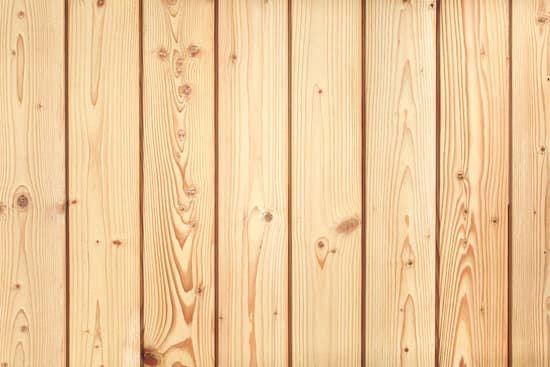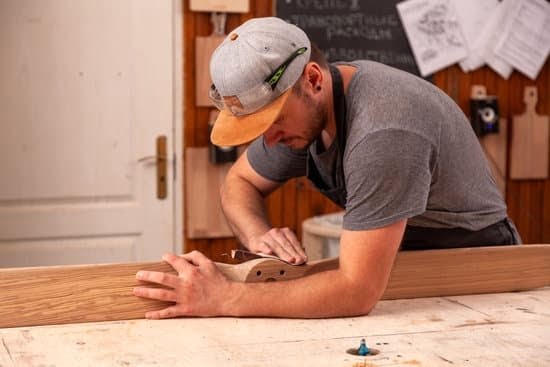Are you struggling with hair dye stains on your woodwork and looking for effective solutions to remove them? In this article, we will explore the challenge of removing hair dye from woodwork and provide valuable insights on how to tackle this issue. Whether it’s a small stain or a stubborn mark, we’ve got you covered with natural remedies, commercial products, and step-by-step removal processes to restore your wood surfaces to their original state.
Removing hair dye from woodwork can be a daunting task, as the porous nature of wood makes it susceptible to absorbing stains. Before diving into the removal process, it’s essential to assess the extent of the damage and understand the precautions and safety measures needed to protect both yourself and the wood surface.
From natural remedies to specialized commercial products, we’ll guide you through various methods to effectively eliminate hair dye stains without causing further harm to the woodwork.
In this comprehensive guide, we will provide you with expert tips on preventing future hair dye stains on your woodwork and offer practical advice on maintaining the beauty of your wooden surfaces. Whether you’re dealing with a recent mishap or long-standing stains, our article will equip you with the knowledge and resources needed to confidently address the challenge of removing hair dye from woodwork.
Assessing the Damage
When it comes to removing hair dye from woodwork, the first step is to assess the extent of the damage. This involves closely examining the affected area to determine how deeply the hair dye has penetrated into the wood. The severity of the stain will dictate which removal method to use and how aggressive your approach needs to be.
Surface Level Stains
Surface-level stains are those that have only affected the top layer of the woodwork. These stains may appear as a thin film or discoloration on the surface. In most cases, surface-level stains can be effectively removed with gentle cleaning methods, minimizing any potential damage to the wood.
Deep Penetrating Stains
On the other hand, deep penetrating stains have seeped into the pores of the wood, making them more challenging to remove. These stains often appear darker and more pronounced, indicating that they have permeated deeper into the material. When dealing with deep penetrating stains, it’s crucial to approach removal with caution to avoid causing further harm to the woodwork.
Regardless of whether your hair dye stain is surface-level or deep-penetrating, it’s important to proceed with care and patience when attempting removal. Understanding the nature of the stain will better equip you to choose an appropriate removal method and achieve successful results without causing unnecessary damage.
Precautions and Safety Measures
Hair dye removal from woodwork can be a challenging task, and it’s important to take necessary precautions to ensure the safety of both the individual performing the removal process and the integrity of the wood surface. Before starting the removal process, it is crucial to ensure that proper protection and ventilation measures are in place.
Protective Gear
When removing hair dye from woodwork, it is essential to wear protective gear such as gloves to protect your skin from coming into direct contact with any potentially harsh chemicals or substances. Additionally, wearing old or protective clothing can help prevent staining of your attire during the removal process.
Ventilation
Proper ventilation is crucial when working with any type of chemical solutions, including those used for removing hair dye stains from woodwork. Make sure to open windows and doors in the area where you will be working to allow for adequate airflow. If possible, consider using fans or other ventilation equipment to further improve air circulation.
Surface Protection
Before starting the hair dye removal process, it’s important to protect surrounding surfaces and areas that are not affected by the stain. Use drop cloths or plastic sheets to cover nearby furniture, floors, and other surfaces to prevent accidental splashes or spills of the dye remover.
By taking these precautions and safety measures, you can ensure a safe and effective hair dye removal process without compromising the health of anyone involved or damaging the woodwork.
Natural Remedies
When it comes to removing hair dye from woodwork, natural remedies can be an effective and eco-friendly solution. These gentle methods are not only safe for the environment but also for the wood surface itself. One popular natural remedy for removing hair dye stains from woodwork is using a mixture of baking soda and water. This paste can be applied to the stained area and gently scrubbed with a soft cloth to lift the stain.
Another natural remedy is using white vinegar, which is known for its stain-lifting properties. Mixing equal parts of white vinegar and water and applying it to the hair dye stain on the woodwork can help break down the dye and make it easier to remove. Additionally, lemon juice can also be used as a natural bleaching agent to fade hair dye stains from wood surfaces.
It’s important to note that when using natural remedies to remove hair dye from woodwork, it’s best to test a small, inconspicuous area first to ensure that the remedy does not cause any damage or discoloration. Additionally, always wear gloves and work in a well-ventilated area when using these remedies.
| Natural Remedy | Effectiveness |
|---|---|
| Baking Soda Paste | Effective for lifting hair dye stains |
| White Vinegar Solution | Breaks down dye and makes it easier to remove |
| Lemon Juice | Natural bleaching agent for fading stains |
Commercial Products and Solutions
When it comes to removing hair dye from woodwork, sometimes natural remedies may not be enough to completely eliminate the stain. In such cases, relying on commercial products specifically designed for wood surfaces can be an effective solution. Below is a list of some of the best hair dye removal products for wood surfaces:
- Wood Cleaner and Polish: Look for a wood cleaner and polish that is specifically designed to remove stains and marks from wood surfaces. These products are gentle on the wood but tough on stubborn hair dye stains.
- Oxalic Acid Wood Bleach: Oxalic acid wood bleach is a powerful solution that can effectively remove hair dye stains from woodwork. It is important to follow the manufacturer’s instructions carefully and use protective gear when working with this product.
- Furniture Refinishing Products: Some furniture refinishing products contain special formulas that can help eliminate hair dye stains from wood surfaces. These products are often used to restore and refinish wood furniture, making them ideal for removing tough stains.
When using commercial products to remove hair dye from woodwork, it is crucial to read the instructions and warnings provided by the manufacturers. Additionally, always test the product on a small, inconspicuous area of the woodwork before applying it to the stained area.
Remember to wear gloves, eye protection, and work in a well-ventilated area when using commercial products to remove hair dye from woodwork.
Overall, there are several commercially available products specifically designed for removing hair dye stains from wood surfaces. By choosing the right product and following the proper application methods, you can effectively eliminate stubborn hair dye stains without causing damage to your valuable wooden fixtures.
Step-by-Step Removal Process
Removing hair dye from woodwork can be a challenging task, but with the right approach and techniques, it is possible to restore the natural beauty of your wood surfaces. Below is a step-by-step guide on how to effectively remove hair dye stains from woodwork:
1. Gather the necessary supplies: Before starting the removal process, it’s important to gather all the supplies you will need. This may include rubber gloves, non-gel toothpaste, baking soda, white vinegar, a soft cloth, and commercial wood cleaner.
2. Test a small area: Before applying any treatment to the entire stained area, it’s best to test a small inconspicuous area of the woodwork first. This will help determine how the wood will react to the selected treatment method.
3. Apply natural remedies: If the test area shows positive results, you can proceed with using natural remedies such as a paste made of equal parts non-gel toothpaste and baking soda. Gently rub the paste onto the stained area with a soft cloth in circular motions until the stain begins to lift.
4. Use commercial products: If natural remedies do not effectively remove the hair dye stain from the woodwork, consider using commercial hair dye removal products specifically designed for wood surfaces. Follow the manufacturer’s instructions carefully when applying these products.
5. Rinse and dry: After successfully removing the hair dye stain from your woodwork, rinse the treated area with water and then dry it thoroughly with a clean cloth.
By following these step-by-step guidelines and being patient with the removal process, you can effectively remove hair dye stains from your woodwork without causing further damage to the surface.
For more tips and tricks on removing hair dye from different surfaces, check out our additional resources section for further assistance.
Preventing Future Stains
Hair dye stains on woodwork can be a headache to deal with, but preventing future stains is equally as important as removing existing ones. To avoid the frustration of having to remove hair dye from wood surfaces, follow these tips and tricks to keep your woodwork stain-free.
One of the simplest ways to prevent hair dye from staining your woodwork is by using protective covers or barriers. When applying hair dye, make sure to cover any nearby wood surfaces with plastic sheeting or old towels. This simple step can help prevent accidental spills and splatters from causing stubborn stains on your woodwork.
In addition to using protective covers, another effective way to prevent hair dye stains on wood surfaces is by applying a clear sealant or finish. This added layer of protection can create a barrier between the hair dye and the wood, making it easier to wipe off any spills or splatters before they have a chance to penetrate the surface.
Furthermore, consider designating a specific area for hair dye application that is away from any woodwork. By creating a designated space for hair dyeing that does not have any exposed wood surfaces, you can significantly reduce the risk of staining your valuable wood furniture or trim. Taking these precautions can save you time and effort in the long run by avoiding the need to figure out how to remove hair dye from woodwork.
Final Thoughts
In conclusion, removing hair dye from woodwork can be a challenging task, but it is not impossible. By carefully assessing the extent of the stain and taking necessary precautions, such as proper protection and ventilation, you can effectively remove the hair dye without causing further damage to the woodwork. Whether using natural remedies or commercial products, there are multiple options available to tackle this common issue.
It’s important to remember that prevention is just as crucial as removal. Taking simple measures such as using protective covers or being mindful when applying hair dye can help avoid future stains on your woodwork. Additionally, regular maintenance and cleaning of your wood surfaces can also contribute to preventing hair dye from staining.
If you find yourself dealing with stubborn or extensive hair dye stains on your woodwork, don’t hesitate to seek professional assistance. There are experts who specialize in restoring and refinishing wood surfaces and can provide tailored solutions for your specific situation. Remember that patience and persistence are key when tackling this issue, and don’t be afraid to reach out for help if needed.
In summary, removing hair dye from woodwork requires careful consideration of the extent of the stain, proper precautions and safety measures, as well as the use of effective removal methods. By following the step-by-step guide provided and implementing preventive measures for future stains, you can keep your woodwork looking beautiful and free from hair dye stains. And always remember that if you encounter particularly stubborn stains, seeking professional assistance is a viable option.
Frequently Asked Questions
How Do You Get Hair Dye Off Walls and Doors?
Getting hair dye off walls and doors can be a bit tricky, but it is possible. One method is to create a paste using baking soda and water, then gently scrub the stained areas. Another option is to use rubbing alcohol or nail polish remover on a cotton ball to carefully dab at the stains.
How Do You Get Permanent Hair Dye Off Surfaces?
Permanent hair dye can be tough to remove from surfaces, but there are some methods that may help. A common approach is to mix equal parts of baking soda and dish soap into a paste, then gently scrub the stained area.
You can also try using acetone-based nail polish remover, but be sure to test it on a small, hidden area first.
How Do You Remove Hair Dye From Bathroom Cabinets?
When it comes to removing hair dye from bathroom cabinets, it’s important to act quickly before the stains set in. One method is to dampen a cloth with rubbing alcohol and gently blot at the stains.
For tougher stains, you can try using a Magic Eraser or a mixture of baking soda and water to gently scrub the cabinets. Just be mindful of the cabinet’s material and finish when trying different cleaning methods.

Hi everyone! I’m a woodworker and blogger, and this is my woodworking blog. In my blog, I share tips and tricks for woodworkers of all skill levels, as well as project ideas that you can try yourself.





